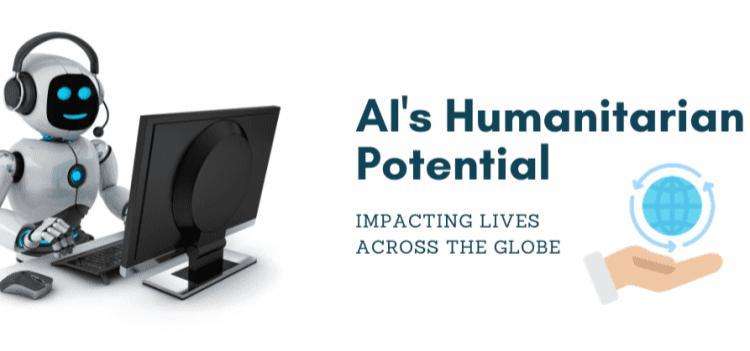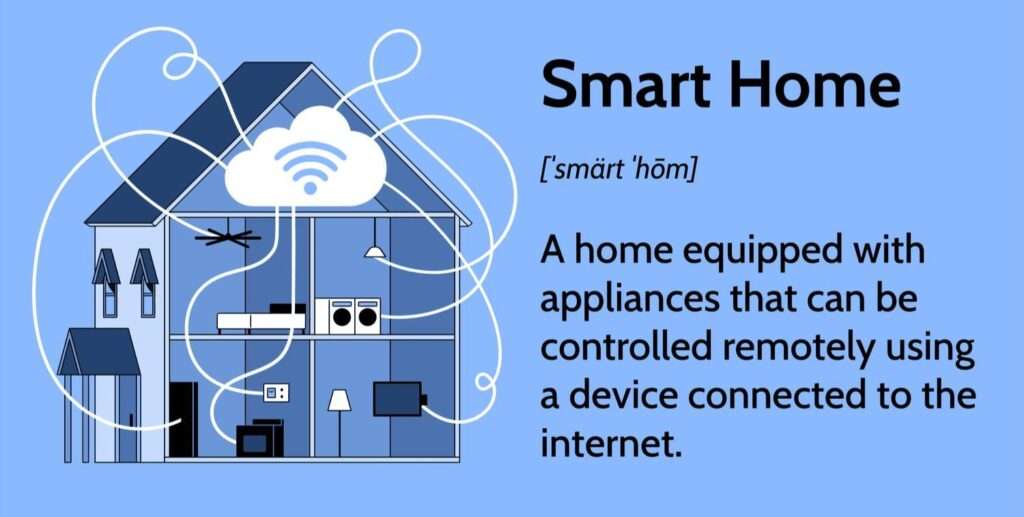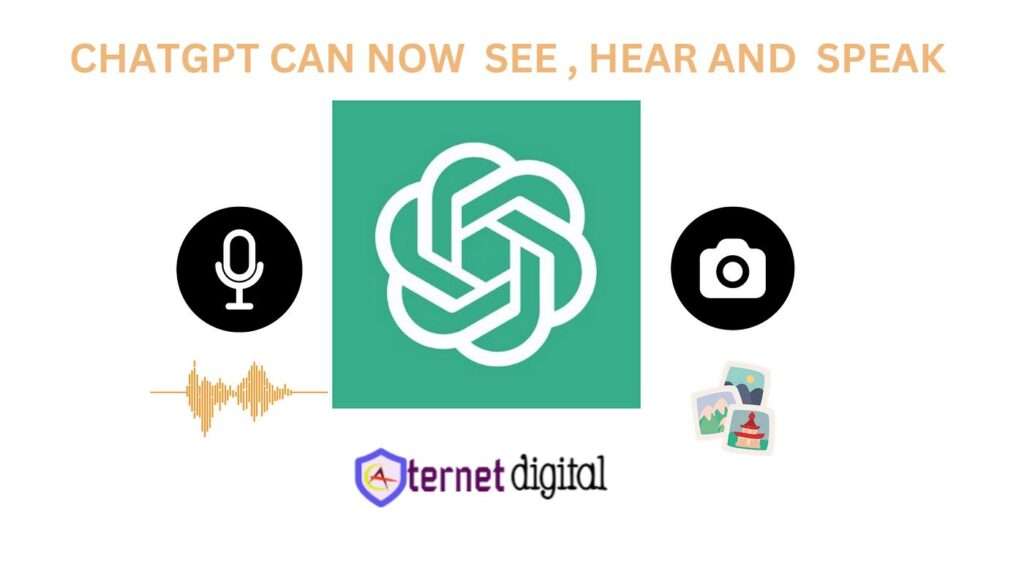
Artificial intelligence (AI) is not only transforming the business and technology domains, but also making a positive impact on the social and humanitarian sectors.
AI can help address some of the most pressing challenges facing humanity, such as poverty, health, education, human rights, disaster relief, and environmental sustainability.
In this article, we will explore some of the ways that AI is empowering the social and humanitarian causes around the world.
AI for Poverty Alleviation
Poverty is one of the biggest problems that affects millions of people globally. According to the World Bank, more than 700 million people live on less than $1.90 a day.
AI can help reduce poverty by;
- Providing data-driven insights
- Improving access to resources
- Creating new opportunities for income generation.
For example, AI can help identify the most vulnerable and marginalized groups, and design targeted interventions to improve their livelihoods.
One such initiative is the Poverty Action Lab, which uses machine learning to evaluate the impact of anti-poverty programs in developing countries.
Another example is the World Food Programme, which uses AI to optimize food distribution, monitor food security, and predict food crises.
AI can also help improve access to basic services, such as health, education, and finance, for the poor.
For instance, AI can enable remote diagnosis and treatment of diseases, especially in rural and remote areas where health facilities are scarce.
One such project is Ada Health, which uses AI to provide personalized health advice and referrals through a mobile app.
AI can also enhance the quality and accessibility of education, especially for girls and women, who often face barriers to education.
One such initiative is the Malala Fund, which uses AI to analyze the barriers and opportunities for girls’ education in different contexts.
AI can also facilitate financial inclusion, especially for the unbanked and underbanked populations, who often lack access to formal financial services. One such example is Tala, which uses AI to provide microloans to low-income individuals through a mobile app.
AI can also create new opportunities for income generation, especially for the youth and women, who often face unemployment and underemployment.
For example, AI can enable digital skills training and job matching, especially in the emerging sectors such as data science, cloud computing, and AI itself.
One such initiative is the Digital Opportunity Trust, which uses AI to provide digital skills training and mentorship to young people in Africa and the Middle East.
Another example is the Women in Machine Learning and Data Science, which uses AI to connect and empower women in the field of AI and data science.
AI for Health and Well-being
Health and well-being are essential for human development and happiness. However, many people suffer from various health issues, such as infectious diseases, chronic conditions, mental disorders, and malnutrition.
AI can help improve health and well-being by enhancing the prevention, diagnosis, treatment, and management of diseases, as well as promoting healthy lifestyles and behaviours.
For example, AI can help prevent the spread of infectious diseases, such as COVID-19, by enabling early detection, contact tracing, and risk assessment.
One such initiative is BlueDot, which uses AI to track and predict the outbreak of infectious diseases around the world.
Another example is AIME, which uses AI to forecast and prevent the occurrence of dengue fever in different regions.
AI can also help diagnose and treat various diseases, especially those that are difficult to detect or cure, such as cancer, diabetes, and Alzheimer’s.
For instance, AI can enable faster and more accurate analysis of medical images, such as X-rays, CT scans, and MRI scans, to detect anomalies and abnormalities.
One such project is Lunit, which uses AI to detect lung cancer and breast cancer from chest X-rays and mammograms.
AI can also enable personalized and precision medicine, which tailors the treatment to the individual’s genetic, environmental, and lifestyle factors.
One such example is Deep Genomics, which uses AI to discover and develop new drugs for rare genetic diseases.
AI can also help manage and monitor chronic conditions, such as asthma, diabetes, and heart disease, by providing real-time feedback, reminders, and recommendations.
For example, AI can enable smart inhalers, which track and improve the inhalation technique and adherence of asthma patients.
One such product is Propeller Health, which uses AI to provide personalized insights and guidance to asthma and COPD patients.
AI can also enable smart glucose monitors, which measure and regulate the blood sugar levels of diabetes patients.
One such product is Dexcom, which uses AI to provide continuous glucose monitoring and alerts to diabetes patients.
AI can also enable smart cardiac devices, which detect and prevent cardiac arrhythmias and heart failures.
One such product is AliveCor, which uses AI to provide electrocardiogram (ECG) readings and analysis to heart patients.
AI can also help improve mental health and well-being, by providing emotional support, counselling, and therapy.
For example, AI can enable chatbots, which offer conversational and empathetic interactions to people who need someone to talk to.
One such chatbot is Woebot, which uses AI to provide cognitive behavioural therapy (CBT) to people who suffer from depression and anxiety.
AI can also enable virtual reality (VR), which offers immersive and realistic experiences to people who need to cope with stress, trauma, or phobia.
One such VR platform is Limbix, which uses AI to provide exposure therapy to people who suffer from post-traumatic stress disorder (PTSD) and other mental disorders.
AI can also help promote healthy lifestyles and behaviours, by providing motivation, guidance, and feedback.
For example, AI can enable fitness trackers, which monitor and improve the physical activity and fitness of users.
One such fitness tracker is Fitbit, which uses AI to provide personalized goals, insights, and coaching to users.
AI can also enable nutrition apps, which track and improve the dietary intake and nutrition of users.
One such nutrition app is Foodvisor, which uses AI to recognize and analyze the food items and calories of users.
AI can also enable meditation apps, which teach and improve the mindfulness and relaxation of users.
One such meditation app is Headspace, which uses AI to provide tailored and guided meditation sessions to users.
AI for Education and Learning
Education and learning are fundamental for human growth and development.
However, many people face challenges in accessing quality and affordable education, such as lack of infrastructure, resources, teachers, and opportunities.
AI can help improve education and learning by enhancing the accessibility, personalization, and effectiveness of education, as well as creating new modes and methods of learning.
For example, AI can help improve the accessibility of education, by providing online and offline platforms, content, and tools, that can reach learners across different locations, languages, and backgrounds.
For instance, AI can enable online courses, which offer flexible and scalable learning opportunities to learners around the world.
One such platform is Coursera, which uses AI to provide thousands of courses and degrees from leading universities and institutions.
AI can also enable offline education, which offer low-cost and low-bandwidth learning solutions to learners in remote and low-resource areas.
One such solution is Zaya Learning Labs, which uses AI to provide offline digital content and analytics to schools and students in India.
AI can also help improve the personalization of education, by providing adaptive and customized learning experiences, that can cater to the individual needs, preferences, and goals of learners.
For example, AI can enable adaptive learning systems, which adjust the difficulty, pace, and feedback of learning materials according to the learner’s performance and progress.
One such system is Knewton, which uses AI to provide personalized and adaptive learning paths to students.
AI can also enable intelligent tutoring systems, which provide one-on-one guidance and support to learners, similar to human tutors.
One such system is Squirrel AI, which uses AI to provide personalized and interactive tutoring to students in China.
AI can also help improve the effectiveness of education, by providing data-driven and evidence-based insights, feedback, and recommendations, that can enhance the learning outcomes and achievements of learners.
For example, AI can enable learning analytics, which measure and analyze the learning behaviours and patterns of learners, and provide actionable insights and interventions to improve learning.
One such platform is Civitas Learning, which uses AI to provide predictive analytics and nudges to students and educators.
AI can also enable automated grading, which evaluate and assess the learning performance and progress of learners, and provide instant and consistent feedback and scores.
One such tool is Gradescope, which uses AI to grade assignments and exams in various subjects.
AI can also help create new modes and methods of learning, by providing innovative and engaging learning experiences, that can foster the creativity, curiosity, and collaboration of learners.
For example, AI can enable gamified learning, which use game elements and mechanics to motivate and reward learners.
One such platform is Classcraft, which uses AI to transform the classroom into a role-playing game, where students can earn points, powers, and rewards for their academic and social behaviours.
AI can also enable immersive learning, which use VR and augmented reality (AR) to create realistic and interactive learning environments.
One such platform is Labster, which uses AI to provide virtual labs and simulations for science education.
AI can also enable social learning, which use social media and networks to facilitate the communication and collaboration of learners.
One such platform is Edmodo, which uses AI to connect and empower teachers and students around the world.
AI for Human Rights and Justice
Human rights and justice are essential for human dignity and equality. However, many people face violations and abuses of their human rights, such as discrimination, oppression, violence, and injustice.
AI can help improve human rights and justice by enhancing the detection, prevention, and resolution of human rights issues, as well as empowering the marginalized and oppressed groups.
For example, AI can help detect human rights violations, such as hate speech, misinformation, and fake news, by using natural language processing (NLP) and computer vision to analyze online and offline content and identify harmful and misleading information.
One such initiative is Hatebase, which uses AI to monitor and track hate speech on social media and other platforms.
Another example is Witness, which uses AI to verify and authenticate the videos and images of human rights abuses.
AI can also help prevent human rights violations, such as human trafficking, child labor, and sexual exploitation, by using data mining and machine learning to identify and disrupt the networks and patterns of perpetrators and victims.
One such initiative is Thorn, which uses AI to combat child sexual exploitation and trafficking online.
Another example is Global Emancipation Network, which uses AI to disrupt human trafficking networks and support the survivors.
AI can also help resolve human rights issues, such as conflicts, disputes, and crimes, by using natural language understanding and generation to facilitate dialogue, mediation, and negotiation among the parties involved.
One such initiative is Build Up, which uses AI to support peacebuilding and conflict transformation processes.
Another example is OpenAI, which uses AI to create a system that can generate fair and impartial judgments for legal cases.
AI can also help empower the marginalized and oppressed groups, such as refugees, minorities, and women, by providing access to information, resources, and opportunities, as well as amplifying their voices and stories.
For example, AI can enable digital identity, which can provide legal and social recognition and protection to the people who lack official documents and records.
One such initiative is ID2020, which uses AI to provide digital identity solutions to the people who need them the most.
AI can also enable storytelling, which can raise awareness and empathy for the people who suffer from human rights violations.
One such initiative is Amnesty International, which uses AI to create immersive and interactive stories of human rights defenders and activists.
AI for Disaster Relief and Environmental Sustainability
Disaster relief and environmental sustainability are crucial for human survival and well-being.
However, many people face the risks and impacts of natural and man-made disasters, such as earthquakes, floods, fires, and wars, as well as the threats and challenges of environmental degradation, such as climate change, pollution, and biodiversity loss.
AI can help improve disaster relief and environmental sustainability by enhancing the prediction, response, and recovery of disasters, as well as promoting the conservation, restoration, and innovation of the environment.
For example, AI can help predict disasters, such as earthquakes, floods, and fires, by using data analysis and machine learning to model and forecast the occurrence and severity of disasters.
One such initiative is One Concern, which uses AI to predict and mitigate the impacts of natural disasters.
Another example is Fireball International, which uses AI to detect and monitor wildfires and bushfires.
AI can also help respond to disasters, such as wars, famines, and epidemics, by using robotics and drones to deliver aid, rescue, and relief to the affected areas and populations.
One such initiative is WeRobotics, which uses AI to enable the use of drones for humanitarian and development purposes.
Another example is Zipline, which uses AI to deliver blood and medical supplies to remote and hard-to-reach areas.
AI can also help recover from disasters, such as hurricanes, tsunamis, and nuclear accidents, by using computer vision and image processing to assess the damage and reconstruction of the infrastructure and communities.
One such initiative is CrowdAI, which uses AI to analyze satellite imagery and provide insights for disaster recovery.
Another example is DeepMind, which uses AI to reduce the energy consumption and emissions of Google’s data centres.
AI can also help conserve the environment, such as wildlife, forests, and oceans, by using sensors and cameras to monitor and protect the biodiversity and ecosystems.
One such initiative is Wildbook, which uses AI to identify and track individual animals and species.
Another example is Rainforest Connection, which uses AI to detect and prevent illegal logging and poaching in the rainforests.
AI can also help restore the environment, such as land, water, and air, by using biotechnology and nanotechnology to clean and purify the environment from pollutants and contaminants.
One such initiative is Biobot Analytics, which uses AI to analyze wastewater and provide insights for public health and environmental issues.
Another example is Nanalyze, which uses AI to discover and develop new nanomaterials and nanotechnologies for environmental applications.
AI can also help innovate the environment, such as energy, transportation, and agriculture, by using renewable and alternative sources of energy, smart and efficient modes of transportation, and sustainable and productive methods of agriculture.
One such initiative is DeepMind, which uses AI to optimize the output and reliability of wind farms.
Another example is Waymo, which uses AI to enable self-driving cars and vehicles.
Another example is FarmWise, which uses AI to enable autonomous and precision farming.
Conclusion
AI is a powerful and versatile technology that can be used for various social and humanitarian causes.
AI can help improve the lives and well-being of millions of people around the world, by addressing some of the most critical and complex challenges facing humanity.
AI can also help create a more inclusive, equitable, and sustainable world, by empowering the people and communities who need it the most.
However, AI also poses some risks and challenges, such as ethical, legal, and social implications, that need to be carefully considered and addressed.
Therefore, it is important to ensure that AI is used for good, and not for evil, and that AI is aligned with the human values and goals.
By doing so, we can harness the potential of AI to make the world a better place for everyone.
RELATED ARTICLES
- How Artificial Intelligence, AI Solutions and Products for E-commerce Can Boost Your Online Sales and Customer Satisfaction
- The Best AI Datasets and Sources for Your Projects
- The best AI tools and libraries for computer vision and image processing
- The best Artificial Intelligence (AI) jokes, memes, and fun facts: How AI Can Make You Laugh Out Loud









